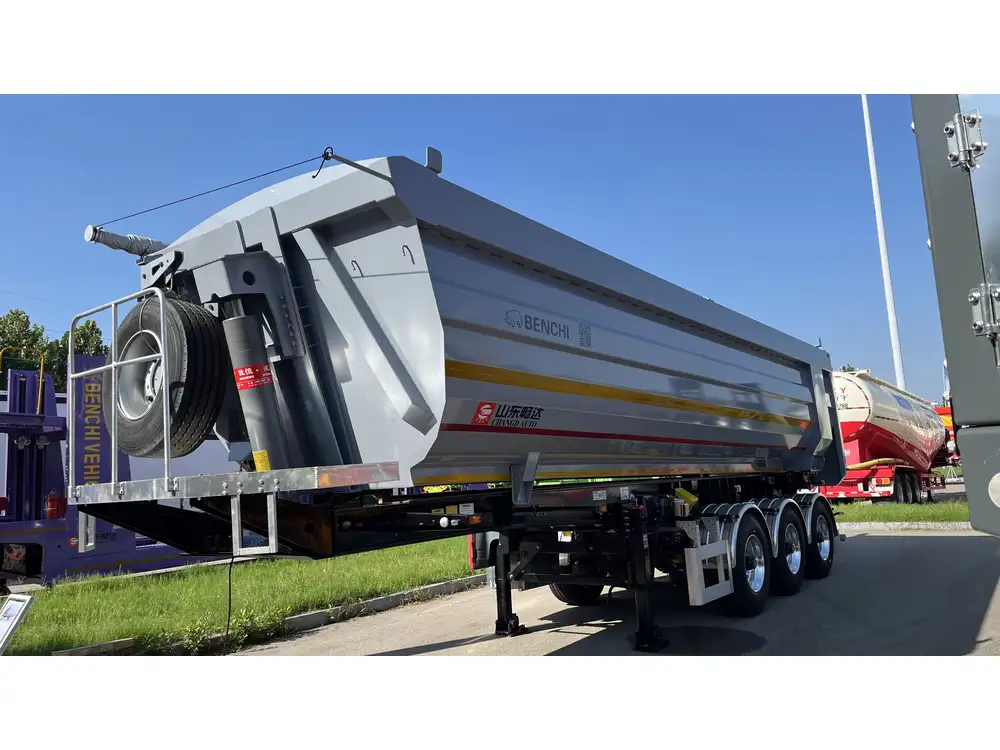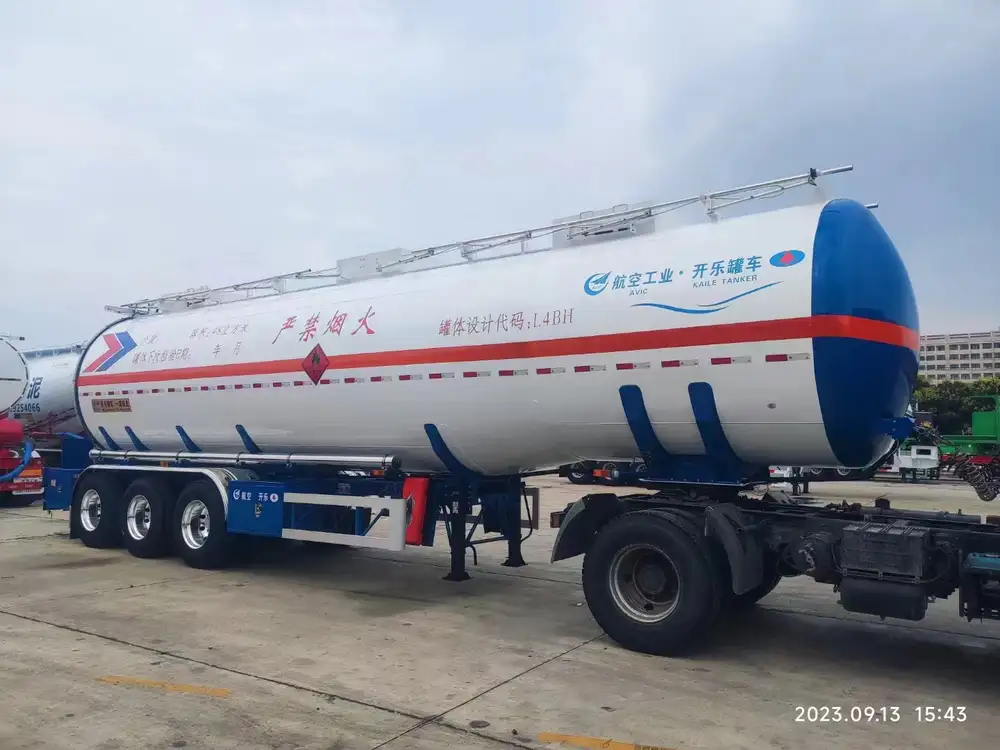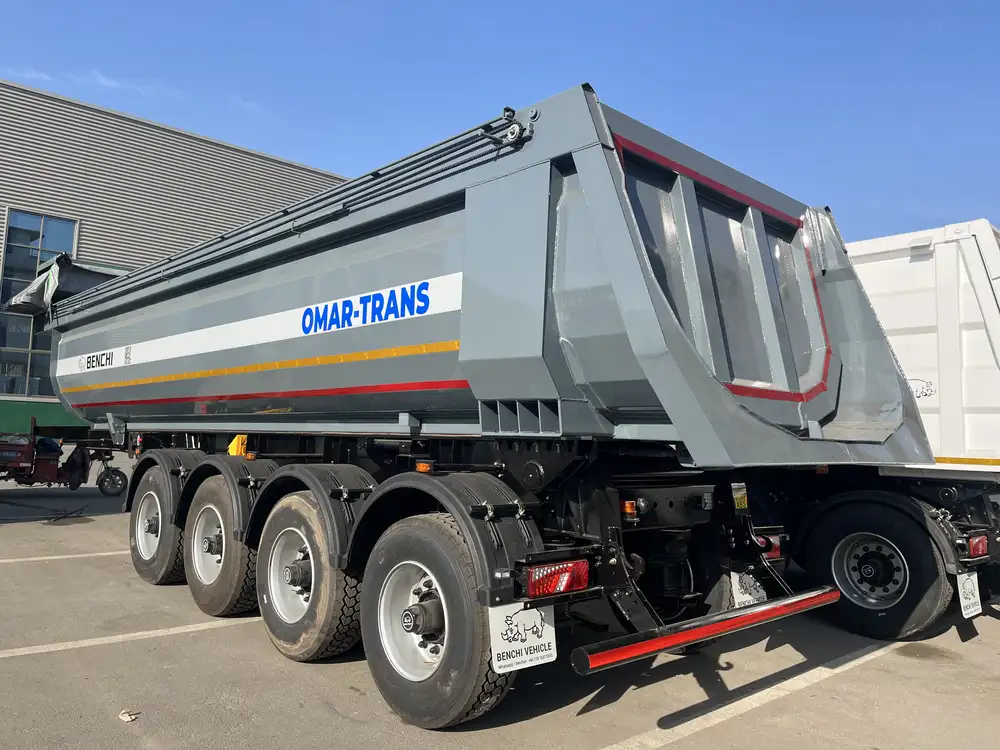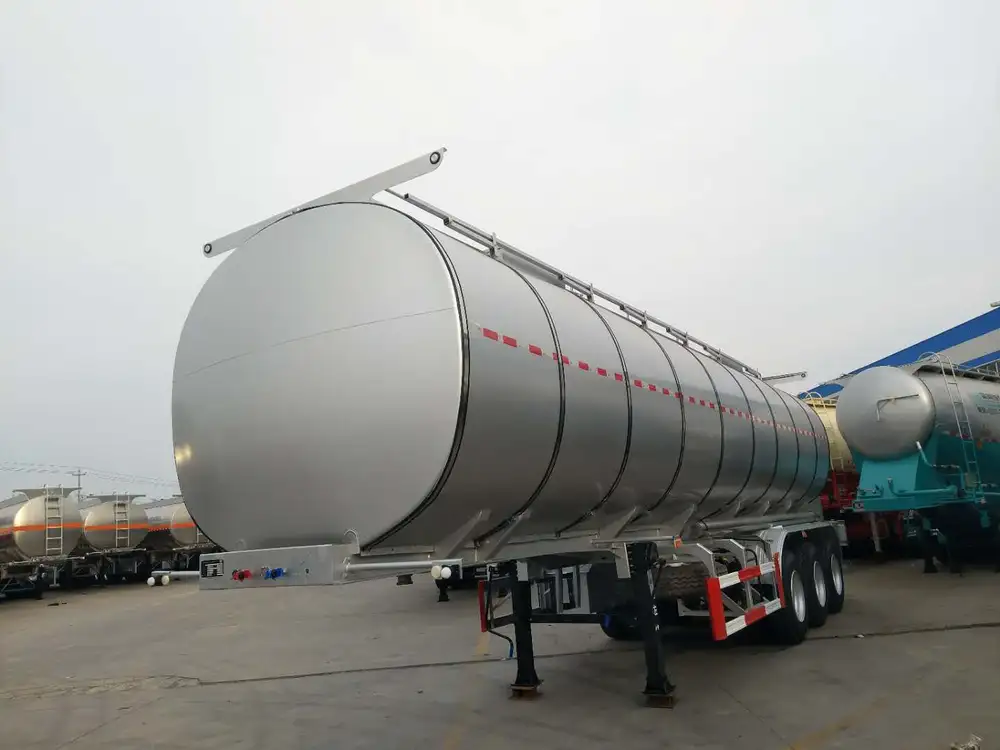Understanding the average height of a semi-trailer is crucial for manufacturers, logistics companies, and trucking professionals alike. As they navigate the complex network of highways, bridges, and loading docks, a semi-trailer’s height can significantly impact safety, compliance, and operational efficiency.
The Standard Height of Semi-Trailers
Typical Dimensions
In the world of logistics, semi-trailers come in various designs tailored for specific cargo types. However, the average height usually hovers around 13 feet 6 inches (approximately 4.1 meters). This measurement is an industry standard established to maximize cargo capacity while ensuring compliance with federal regulations pertaining to road use.
| Trailer Type | Average Height |
|---|---|
| Flatbed Trailers | 13′ 6″ (4.1 m) |
| Enclosed Trailers | 13′ 6″ (4.1 m) |
| Refrigerated Trailers | 13′ 6″ (4.1 m) |
| Lowboy Trailers | 10′ (3.0 m) |
| Step Deck Trailers | 11′ 6″ (3.5 m) |

Factors Influencing Height Variability
While 13 feet 6 inches serves as a guideline, several factors can influence the actual height of a semi-trailer, including:
Load Type: The type of cargo can affect height requirements. Equipment and machinery might need additional height clearance.
Trailer Design: Certain trailers, such as lowboy trailers used for heavy machinery, can be significantly lower, offering height adjustment features based on cargo needs.
Regulatory Compliance: Different regions may impose varying height restrictions; thus, specific design modifications may be essential.
Regulatory Standards for Semi-Trailer Heights
Federal and State Regulations
The Federal Motor Carrier Safety Administration (FMCSA) in the United States has set specific regulations regarding the height of vehicles. According to federal law, a commercial vehicle cannot exceed a total height of 13 feet 6 inches unless special permits are acquired. This regulatory framework ensures that semi-trailers are safe for use on public roads, minimizing accidents related to height clearance violations.
| Regulatory Body | Height Limit |
|---|---|
| Federal Regulations | 13′ 6″ (4.1 m) |
| State Regulations | Varies per state |
| International Limits | Often similar to U.S. laws but can vary |

Permit Requirements for Overheight Loads
If your semi-trailer exceeds standard height limits, obtaining a special permit becomes paramount. Here’s a basic outline of the process:
- Application: Submit an application to the respective state authority.
- Specifications: Include detailed specs about the load, including height, width, and weight.
- Route Planning: The request often includes a review of the proposed route to assess height clearance at overpasses and bridges.
Importance of Knowing Semi-Trailer Heights
Safety Considerations
Navigating through areas with low clearances can result in serious accidents, leading to hazardous conditions for the driver and detrimental damage to the goods transported. Understanding the average height of semi-trailers prepares operators for the following risks:
- Bridge Strikes: A common issue resulting in damage to the trailer and infrastructure.
- Loading Dock Accessibility: Arrival at a dock with height restrictions can lead to delays in loading/unloading.

Increasing Operational Efficiency
Understanding the average height can enhance logistics planning. Here’s how:
- Route Optimization: Drivers can plan routes that avoid low-clearance areas, significantly enhancing delivery timelines.
- Improved Dock Management: Knowing the height allows for better preparation at loading docks, resulting in streamlined operations.
Adjusting Heights: Modifications and Solutions
Adjustable Suspension Systems
Some semi-trailers come equipped with adjustable suspension systems. This technology allows operators to raise or lower their trailers depending on the cargo and specific route requirements.

Advantages:
- Versatility: Easily adaptable to various cargo types and loading conditions.
- Reduced Risk of Damage: Lowered trailers can minimize ramp and dock height discrepancies.
Additional Loading Equipment
For specific cargo types (like those requiring specialized environments), various loading equipment might be necessary.
Examples:
- Lift Gates: Assists with loading/unloading freight from standard height to ground level efficiently.
- Dock Plates & Ramps: Facilitate smooth transitions between trailers and loading bays.

Examples of Semi-Trailer Types and Their Heights
Semi-trailers come in various forms, each tailored to specific transport needs. Here, we dissect a few popular types along with their heights.
1. Flatbed Trailers
- Typical Use: Shipping large, heavy items that do not require cover.
- Average Height: 13′ 6″ (4.1 m)
2. Refrigerated Trailers (Reefers)
- Typical Use: Transporting temperature-sensitive goods.
- Average Height: 13′ 6″ (4.1 m)

3. Enclosed Trailers
- Typical Use: Protecting cargo from elements and theft.
- Average Height: 13′ 6″ (4.1 m)
4. Lowboy Trailers
- Typical Use: Moving heavy machinery or oversized loads.
- Average Height: 10′ (3.0 m)
5. Step Deck Trailers
- Typical Use: Hauling loads that are too tall to fit within the dimensions of an enclosed trailer but do not exceed lowboy height limits.
- Average Height: 11′ 6″ (3.5 m)

Conclusion: Navigating the Heights of Semi-Trailers
The average height of a semi-trailer is a pivotal piece of knowledge for anyone involved in the logistics and transportation industry. At 13 feet 6 inches, this standard height facilitates compliance with federal regulations, enhances operational efficiency, and bolsters safety on the roads. It is incumbent upon manufacturers, drivers, and logistics planners to stay informed about variations, regulatory factors, and the specific requirements of different trailer types.
Being aware of the nuances associated with semi-trailer heights not only streamlines operations but also clarifies potential pitfalls in logistics management. As you engage in your transportation endeavors, keep a vigilant eye on height-related challenges, which, if managed effectively, can lead to improved efficiency, increased safety, and reduced operational costs.
Frequently Asked Questions (FAQs)
Below are questions often posed by individuals seeking further insight into semi-trailer heights:
What can I do if my load exceeds the standard height?
- Obtain a permit and consult local regulations for possible route adjustments.
How can I find out specific height limits for my route?
- Most state transportation departments have resources or apps providing this information.
What are the penalties for exceeding height limits?
- Penalties vary by state and can include fines, detainment of the load, or even impounding of the vehicle.
Armed with this knowledge, trucking professionals can ensure their operations remain within legal boundaries while maximizing efficiency and safety across their networks.



